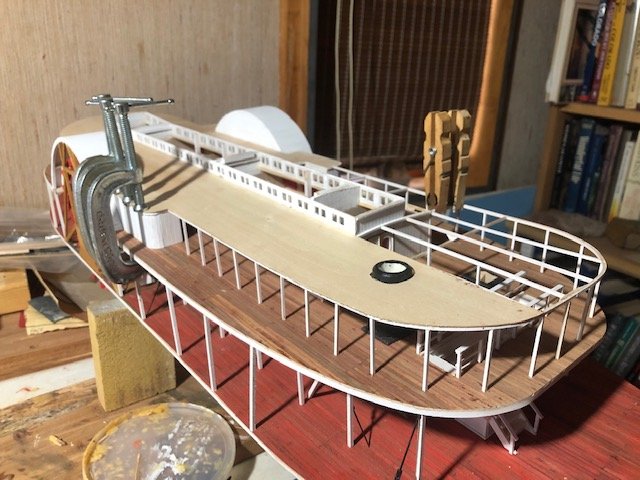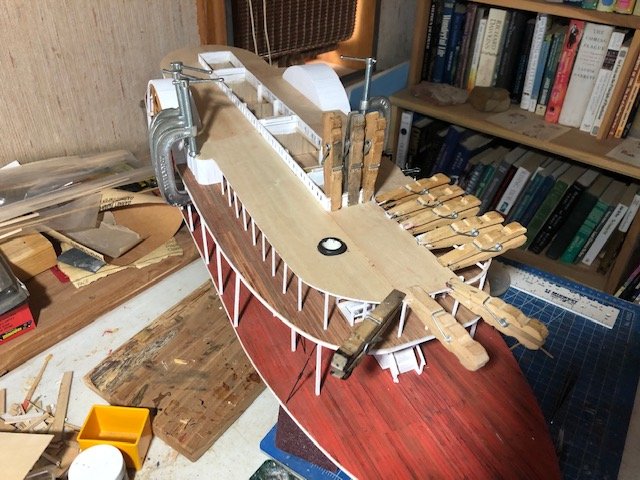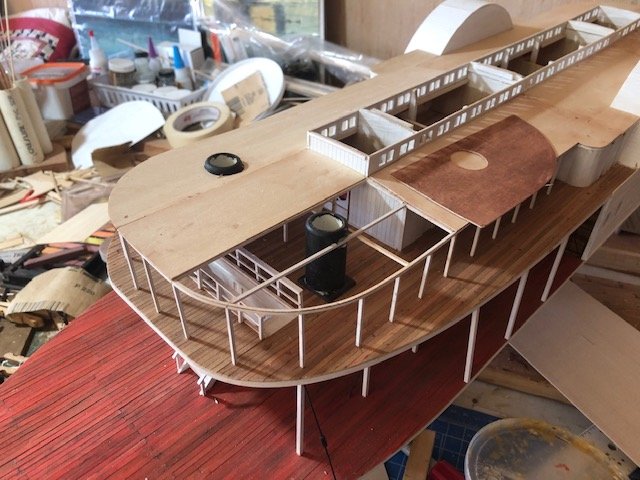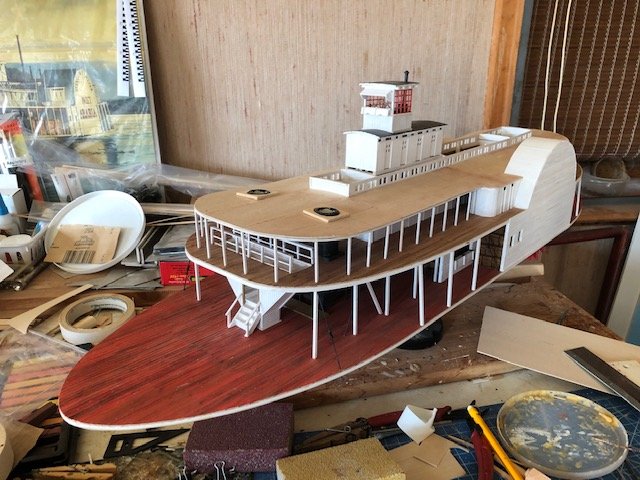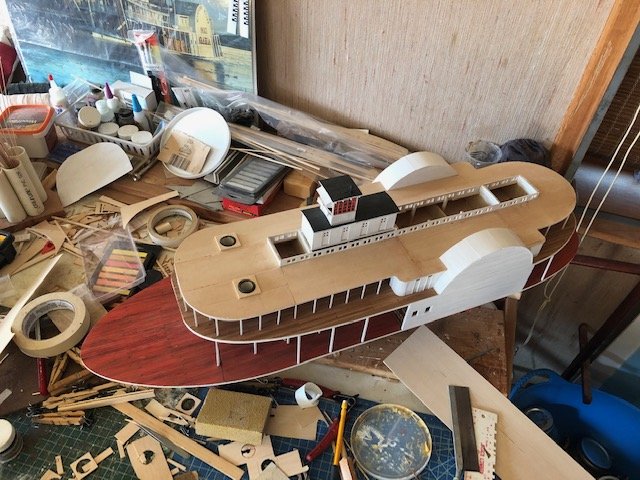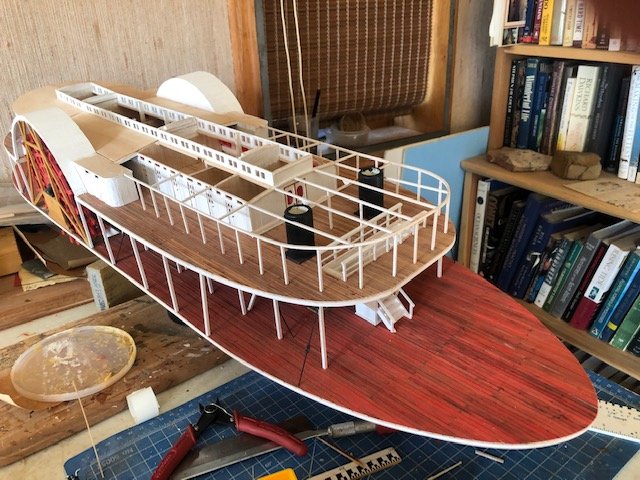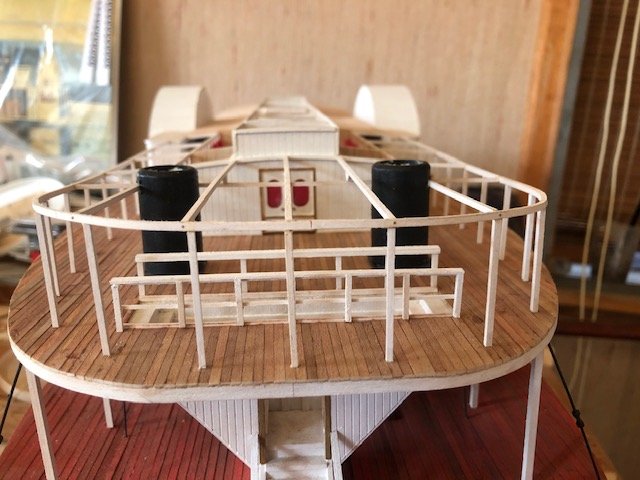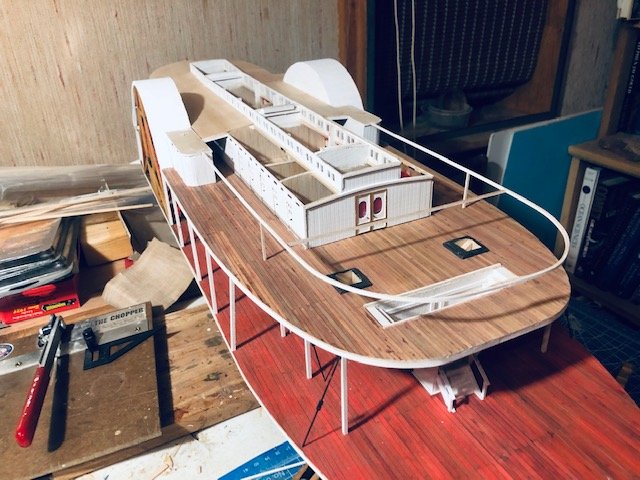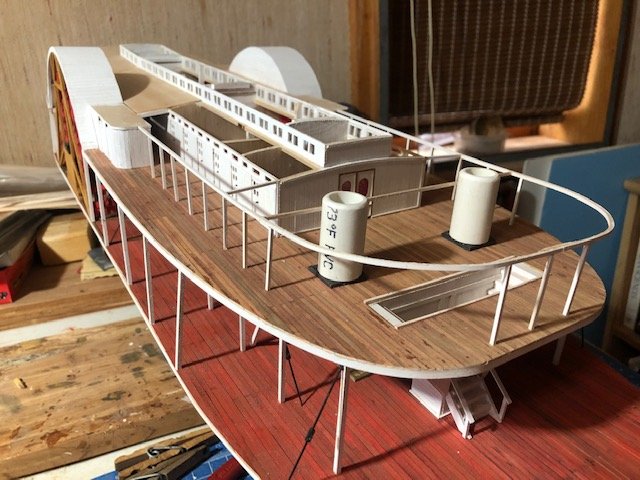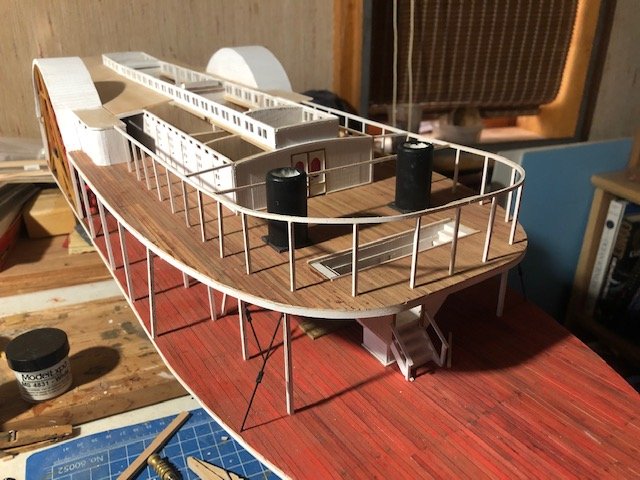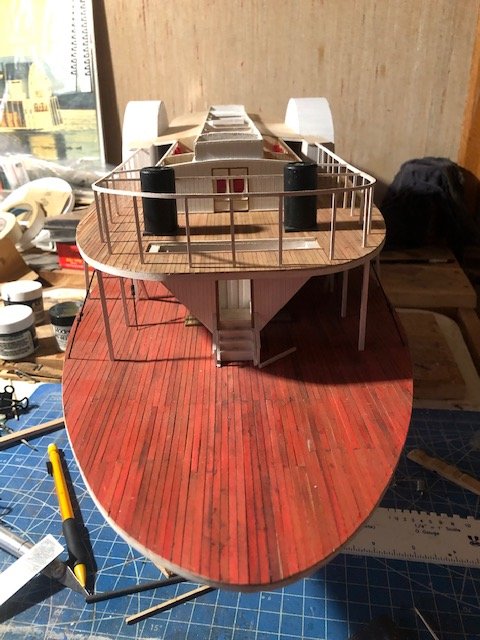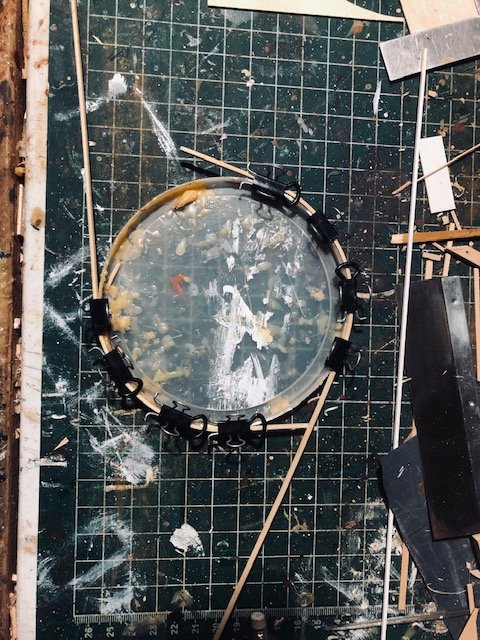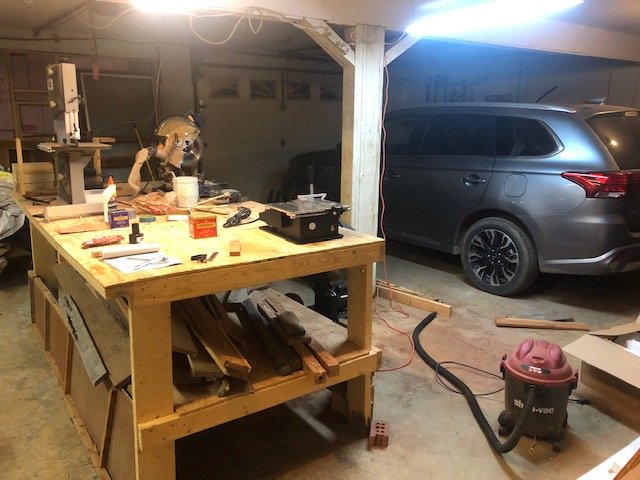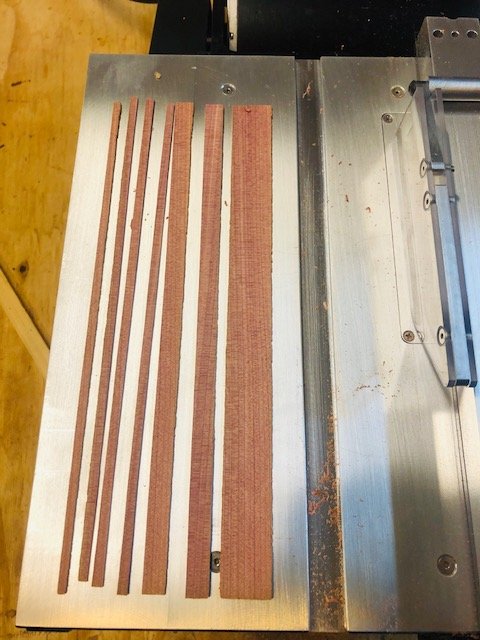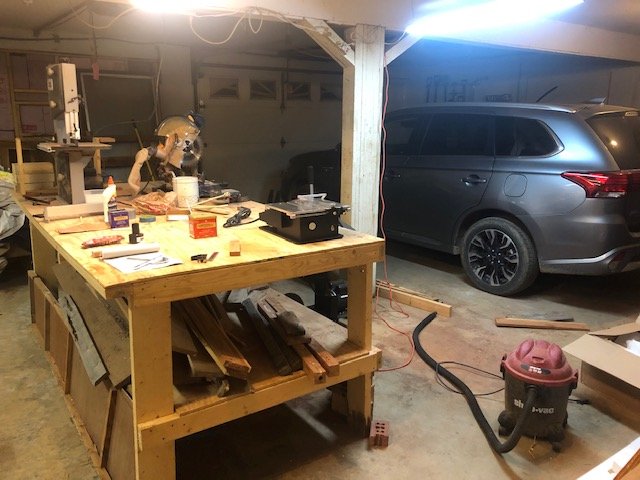-
Posts
3,532 -
Joined
-
Last visited
Content Type
Profiles
Forums
Gallery
Events
Everything posted by Cathead
-
Great to have you back, nice work! Flooding is certainly a pain, though parts of the Plains and Midwest are as susceptible to damaging bouts of heavy rain as the PNW. For example, the record 24-hour rainfall for Washington and Oregon is only ~14" and ~11", compared to ~18" for Missouri. Texas actually holds the lower 48 record at ~42", but that's because of the Gulf Coast exposure to hurricanes. Oklahome and Arkansas, more your climate, are ~16" and ~14". So, you know, could be worse.
- 133 replies
-
- chaperon
- model shipways
-
(and 2 more)
Tagged with:
-
James, would it be helpful to clarify MSW's expectations for three types of images: (1) your own, (2) not your own but public domain or you have right of use, and (3) not your own and you don't have right of use? This post seems aimed at (1), i.e. not using something like Photobucket to link your own photos into MSW. But many people may confuse this with (2) and (3), thinking that they can download some image from the internet and then upload it onto MSW. For (2), does MSW want that to happen or should people still link to the original photo's source. For (3), this should not be done but that isn't stated clearly here. Maybe this is pedantic, but given the confusion out there about copyright and related issues, it would seem useful to be as clear as possible.
-
This is very true. A good builder can make a bad model look good, but a bad model can frustrate a less experienced builder. For example, I think my version of the Corel Ranger came out looking pretty nice, but I wouldn't recommend that kit to anyone as it was of poor quality and wildly frustrating to build. Since the core purpose of this thread is to help less experienced builders understand their choices, it's important to consider the kit rather than the finished product.
-
John, your comment reminded me of a Mark Twain quote about being in a steamboat pilot house, which I looked up to ensure I got it right. This refers to one of the big, fancy, Mississippi riverboats, but the concept applies to the Arabia as well.
- 599 replies
-
- sidewheeler
- arabia
-
(and 4 more)
Tagged with:
-
Nah, if I'd been that upset I'd have jammed a broken branch through the bow, installed some broken stacks and tangled rigging, buried it at an angle in brown-tinted epoxy, and called it a wreck model. Or given it the fate of the Saluda, which blew up near Lexington, MO with such force that the boat's safe landed on the river bluffs.
- 599 replies
-
- sidewheeler
- arabia
-
(and 4 more)
Tagged with:
-
Nicely put! It's impressive how much a few supportive comments can change one's perspective.
- 599 replies
-
- sidewheeler
- arabia
-
(and 4 more)
Tagged with:
-
So I made another big mistake. Afterward, I realized that it's become a pattern lately, I think because life has gotten really stressful and I was using modelling as an outlet but this also meant I wasn't focused on what I was doing. So I started laying out the forward part of the hurricane deck. Below, the starboard side is being glued down. Notice any problem? That's right, I forgot to measure and cut the hole for the chimney or even install the chimney. I also didn't fully color the underside with pastel, used too much glue (causing an ugly color smear underneath) and didn't hold the part over the heads (by the wheel) down long enough, so the glue expanded and peeled it back up. I was so upset when I discovered all this, but it's what happens when I'm not focused. I had to step away for a week and not look at the model. Gradually I was able to think through ways to deal with this. I carefully measured, drilled, cut, and sanded the chimney hole, which was nerve-wracking as the strucure is delicate and any breakage would be very difficult to repair. I sliced out and fixed the glue-warped part. I can't do anything about the color smear underneath, but at least it's hard to see from most angles. Here's the fixed deck, with clamps still holding down the repaired back part. Here I'm attaching more of the deck: Here's how I meant to do the starboard side, until I sat down for stress relief and got ahead of myself. Here, I've pre-measured and cut the hole so that the deck piece can just drop down on top of the already installed chimney, and made sure to fully color the underside. So now the whole hurricane deck is installed. Here are two views of the current status. It will be another few weeks before any updates as we'll be taking several short trips to Arkansas to help my in-laws with various things. I hope when that's over I can focus again and keep going. Next, I'll be applying the "tar paper" covering of this deck and painting it all black. Then it's railing time.
- 599 replies
-
- sidewheeler
- arabia
-
(and 4 more)
Tagged with:
-
When you glued these together, did you weight them down evenly? Pieces may seem to lie flat when dry-fit, but glue can cause the joint to warp a bit during drying. So, as Mark says, one option would be to try again and ensure that everything is weighted and/or clamped down nice and flat so that it dries that way. If this were a "regular" ship and the twist was minor, you might be able to get away with pulling the stem and stern back into line with other planking and framing. But the way these pieces stick out, and with the relative lack of support around them, I don't think that would work.
-
John, a question, to my eye it seems that the planking above the opening differs on the port and starboard side. On the port side it curves down to meet the vertical piece on the outside, but on the starboard side there's a distinct flat zone between the curve and that outside piece. Am I seeing this wrong? Hate to pick nits, but I'm curious about this.
-
Careful cutting and filing can achieve almost anything from a solid piece of wood, so have at it!
-
Cool! As for the T-shape, I'd forgotten about that. Would be it easier to start over and manufacture a T-shaped keel using two different pieces of wood, rather than trying to cut the T-shape onto your solid piece? Another option, depending on the tools available to you, could be to carefully use a table saw set very low to "rout" the lower edges of your keel. Whether that's practical or safe depends on the size of the saw and workpiece. How does the T-shape transition to the wedge shape? I can't quite picture this. A wedge sounds like it could be carved/filed/sanded fairly easily, but I'm not sure about the connection.
-
A bit more progress framing the hurricane deck: I also added the railings protecting the main staircase. If you look closely you can see another goof. I ran two of the longitudinal beams too close to where the chimneys had to be (they aren't installed permanently yet) and had to file a slot on the outboard sides of the chimneys to let them sit where they needed to be. It's going to be essentially invisible when the decking is in place, but it caused some temporary gnashing of teeth.
- 599 replies
-
- sidewheeler
- arabia
-
(and 4 more)
Tagged with:
-
You could try building your own miter box/jig out of scrap wood, something that would provide a flat, smooth surface that the whole razor saw blade can be held against as it cuts. That would also help with ensuring consistent cuts in different pieces.
-

Advice on work station setup
Cathead replied to Paul Gardner's topic in Modeling tools and Workshop Equipment
Paul, I highly recommend this thread (started in 2013 and still going) where people post photos of their workstations and otherwise discuss the topic. My workspace is a ~3'x4' table in a corner of my small living room, which has been sufficient for all my various models. I have a few power tools in the garage that I use occasionally for certain things, but the vast majority of my actual modelling happens at that table, using simple hand tools. I think the best thing I've done is to develop an organizational system that lets me store a lot of stuff in a small space and find it easily. This includes a vertical wood-strip holder (made of PVC lengths glued together), a similar unit for tools that's mounted on a simple turntable, and a plastic storage unit with lots of little boxes for all sorts of small parts. Most folks would likely agree that a good source of light is key. Ventilation can also be important, as even raw sawdust can be pretty irritating and even dangerous, much less paint fumes or dust with paint/glue in it. If I'm doing more than light, raw wood sanding, I take it to the garage or outdoors and/or wear a mask. I also make a point of emphasizing benign materials like wood glue and water-based paints, as those are less toxic and irritating, especially given my living room location. Have fun getting started! -
So that was strange. I wrote a whole update post, which was then eaten when I tried to post it by some Firewall Error. But when I went back and did a test post it went through. So here's a shorter version because I don't feel like rewriting it all. Bending beams for the forward part of the hurricane deck: Connected together and installed on the model, using pins at the back: Adding vertical supports and testing the heat shields that keep the chimneys from burning passengers or setting the boat on fire; these are made from scrap PVC: Heat shields painted and vertical posts all complete: View from the bow: If you look closely, you may be able to tell that this structure is a bit out of alignment; the forward curve is closer to the port side than the starboard. It's fairly obvious from some angles and not at all from others. Redoing would mean starting over on this entire structure and I'm not up for that, so I'm going to do my best to hide it. The finished model will have enough detail and complexity that I think it'll be pretty easy to overlook. This is why I'm not a professional (among other reasons). Happy (soon) New Year to all of you.
- 599 replies
-
- sidewheeler
- arabia
-
(and 4 more)
Tagged with:
-
Cut one side, trace it onto the other, then cut the other with a bit to spare so that you can file/sand it to its final configuration. Practice on some spare material to get the idea and figure out any details that might not be obvious.
-
Kris, looks like your photo didn't load properly. Can you try again? As for your previous question, depends on what tasks you consider easy. A single-piece keel will be stronger and potentially easier than ensuring that five different pieces are all glued together straight, but it may also be harder to cut out properly. If you screw up on a smaller piece it's easier to redo. The multi-part keel is more authentic, but whether you care about that is your call.
-
Brian, short answer, we do the logging ourselves and hire in a portable bandsaw mill for the initial milling. It can handle logs up to 20' long. I have a rough cut list for what I want. The milled pieces are stacked on a concrete pad in our open pole barn to cure. After than they can be shaped just like any lumber using normal tools (table/circular/hand saw). Over the years I've built multiple outbuildings and varius home furniture with 100% on-farm cedar and sold a fair amount of custom-milled lumber to other people for things like barn siding, porches, garden sheds/beds, etc. The strips shown above were milled on the Byrnes saw from a tiny piece of scrap (roughly 3/4" x 2" x 6"). I used the Byrnes to smooth both thin edges, then cut thin veneer sheets from the 3/4" edge, then stacked them and cut them into thinner planking strips. Took just a few minutes. Small-scale work really doesn't take much wood compared to the scale I'm used to working in; I have a lifetime of model-scale cedar just in the scrap piles I haven't burned yet. We normally use cedar scrap as spring firewood for boiling down maple syrup as it burns hot and fast but isn't ideal for indoor firewood due to its high resin content. Druxey, thanks! Looking forward to it.
- 599 replies
-
- sidewheeler
- arabia
-
(and 4 more)
Tagged with:
-

Can i live without a BYRNES TABLE SAW
Cathead replied to shihawk's topic in Modeling tools and Workshop Equipment
Another Christmas arrival: Thanks to all who answered my recent questions in this thread. Given that I do a lot of timber management on my mostly wooded 40 acres already, and have stacks of maple, cherry, cedar, and other woods curing in my barn, I'm really excited to start making more fine-scale materials with this saw. Here's a few Eastern Red Cedar strips I milled up just to make sure the saw was functioning properly after shipping: It's so pretty, I'm curious to try modeling something with it. -
Got the stern half of the hurricane deck glued down: Edges need some trimming but I'll do that all at once when the whole deck is installed. The larger news is the arrival of a new tool in the Cathead workshop: That's a Byrnes table saw on the workbench. Technically a Christmas present, but I wanted to make sure all was in order. I did one quick milling of some Eastern Red Cedar scrap I had lying around, making thin planking-scale pieces and veneer strips. It's really pretty in person: I hope I never have to buy model wood again. Living on 40 acres of mostly woodland with an orchard mixed in, I have lots of fun self-harvested stuff to play with, and this will let me mill up quite a bit of stock from my scrapbox. Reusing things and avoiding waste is a big deal for me, so I'm very excited for this development. A Missouri River craft of some sort built with all Missouri wood sounds like a really fun and unique project once Arabia is done. Happy Holidays to all of you. Our big celebration is a solstice party this weekend for a variety of rural friends and neighbors, featuring homemade mead and some good traditional fiddle-tune jamming.
- 599 replies
-
- sidewheeler
- arabia
-
(and 4 more)
Tagged with:
-
Lovely details. Sorry to hear of the upcoming delay but sounds like it's in a good cause.
- 133 replies
-
- chaperon
- model shipways
-
(and 2 more)
Tagged with:
-
Although all the advice given here is good and well-meaning, it's also the case that the value of a build lies ultimately with the builder. We're not all shooting for pure presentation or accuracy; most builds are about the process as much as the product. So I think it's pretty cool that you're taking on (and sharing) this project as a personal journey. Case in point, I built a simple Maine lobster boat for my mother's 70th birthday as she's loved coastal Maine for a long time. She didn't care one bit that it wasn't museum quality, I loved building it for her and she has it proudly displayed in a little Maine shrine in her home with an Acadia poster behind it. So I hope this project serves you well for the purposes you desire. And if you learn some things about ship modelling from the experience (and the advice), all the better.
-
Interesting project, Kris. I'm of partial Norwegian descent myself, from a grandfather who was very proud of his heritage (and claimed direct lineage to Erik the Red, though who doesn't?). A proper Viking ship is on my wish list as well and I'll be interested to see how your project goes. I, too, am a "learn it yourself as you go" kind of person and have the mistakes to prove it, so wish you success on this difficult but fascinating choice of build. For what it's worth, MSW has a lot of good tutorial articles in the help section that may answer many of your questions regarding specific aspects of ship modelling.
About us
Modelshipworld - Advancing Ship Modeling through Research
SSL Secured
Your security is important for us so this Website is SSL-Secured
NRG Mailing Address
Nautical Research Guild
237 South Lincoln Street
Westmont IL, 60559-1917
Model Ship World ® and the MSW logo are Registered Trademarks, and belong to the Nautical Research Guild (United States Patent and Trademark Office: No. 6,929,264 & No. 6,929,274, registered Dec. 20, 2022)
Helpful Links
About the NRG
If you enjoy building ship models that are historically accurate as well as beautiful, then The Nautical Research Guild (NRG) is just right for you.
The Guild is a non-profit educational organization whose mission is to “Advance Ship Modeling Through Research”. We provide support to our members in their efforts to raise the quality of their model ships.
The Nautical Research Guild has published our world-renowned quarterly magazine, The Nautical Research Journal, since 1955. The pages of the Journal are full of articles by accomplished ship modelers who show you how they create those exquisite details on their models, and by maritime historians who show you the correct details to build. The Journal is available in both print and digital editions. Go to the NRG web site (www.thenrg.org) to download a complimentary digital copy of the Journal. The NRG also publishes plan sets, books and compilations of back issues of the Journal and the former Ships in Scale and Model Ship Builder magazines.




